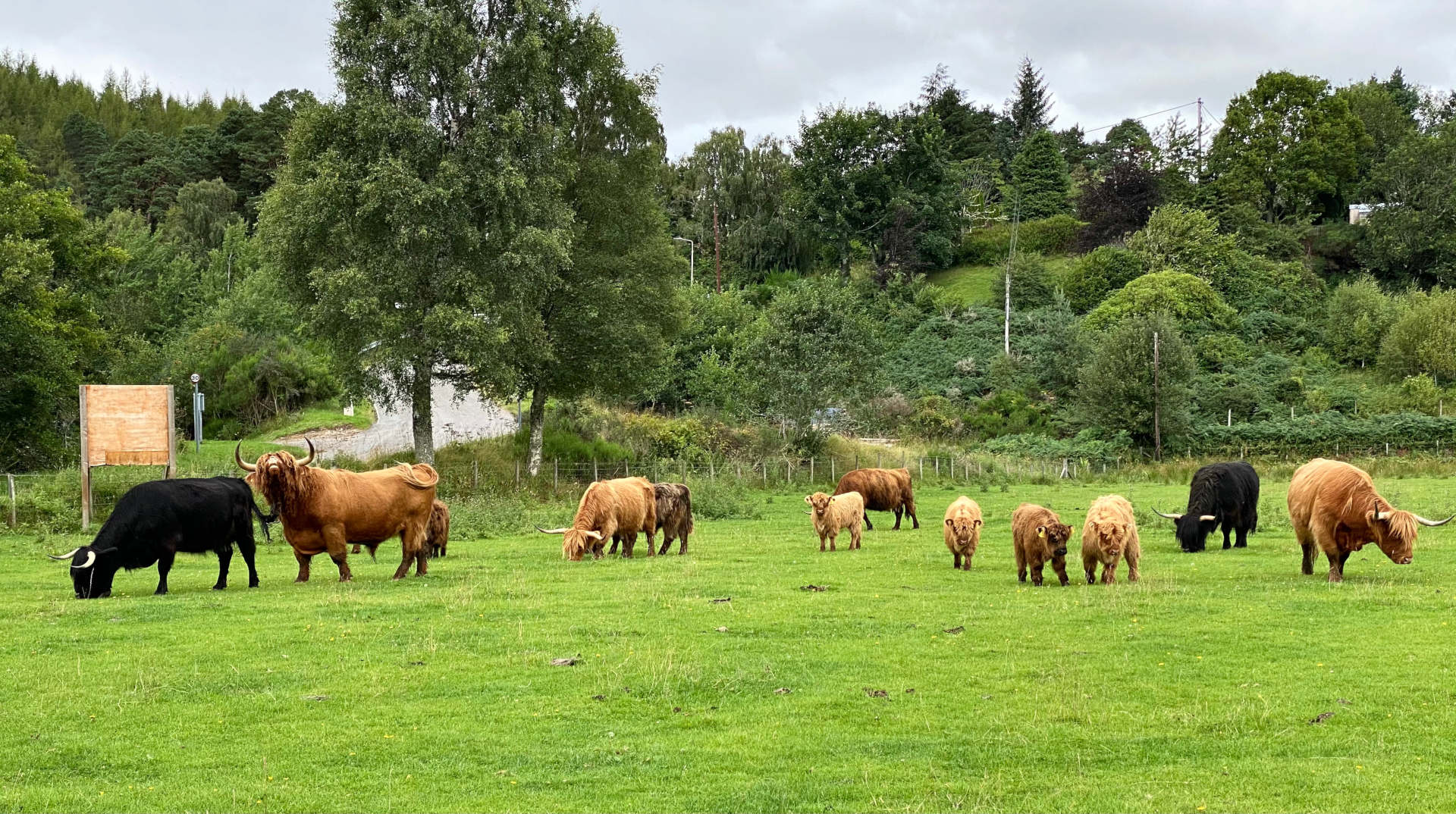The Highland Coo: 14 Facts Beyond the Horns
You definitely must have seen a Highland Coo or two by now, they’re very famous you know. Highland Cows or “heilan coos” aren’t just dominating many a Scottish field, but they also dominate social media every Tuesday under the hashtag ‘coosday.’ Highland Coos are inherently Scottish; hardy, forceful, bonnie, can be found in Scotland, and are often, although not always, ginger. There’s nae shortage of a Heilan Coo up here in the Highlands, but how much do you really know about this horned beast?
1. They’re really old
Highland Coos are the oldest cattle breed in the world, appearing in the 6th century in the Outer Hebrides. Thankfully, the coos you see nowadays aren’t that old. In fact, their lifespan is up to 20 years. That may not seem like a lot, but that is a longer lifespan than most other breeds of cattle. Must be that fine Highland air.
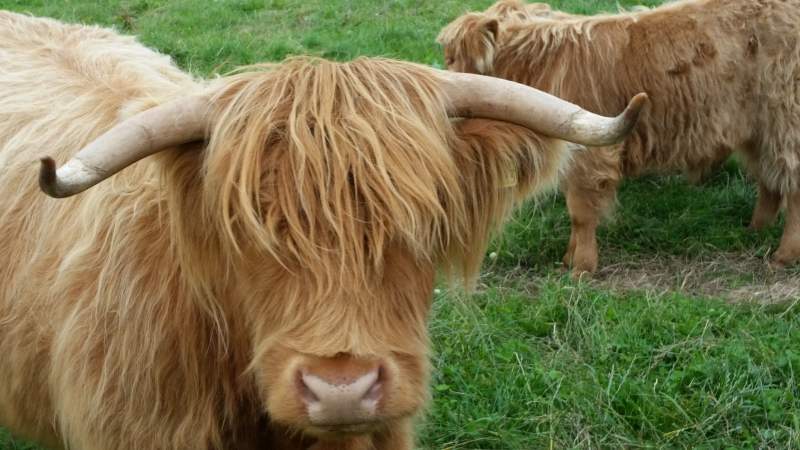
2. The Drove Road
You might have heard the term “the drove road” used in Highland history. These were the tracks through the Highlands where the farmers would take their cattle to market. They could only walk a few miles each day so would stay in different places every night so the animals could graze and stay safe. Ever heard the term, “arriving in droves?” We aren’t completely sure, but it may well have come from this.
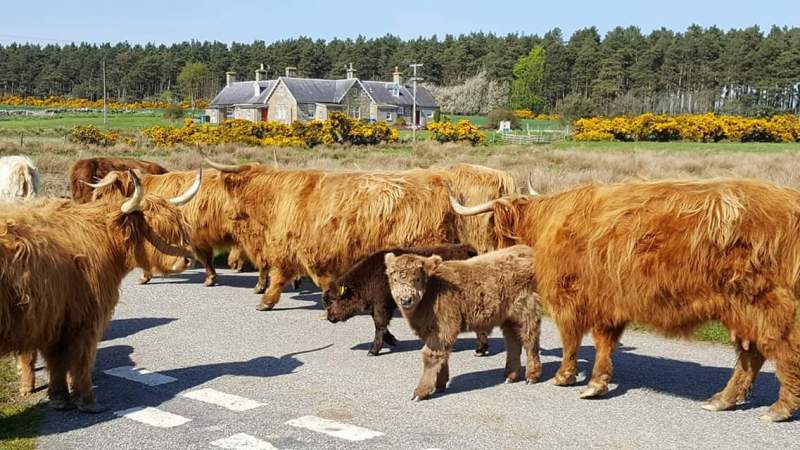
3. Coo-tastrophe
Back in the 18th century, cattle thieving was a huge problem. The clans were terrible for pinching each other’s cattle. Watches were set up, which farmers would pay to get their coos back. Rob Roy MacGregor operated as a watch, drover, cattle dealer and sometimes, a thief himself!
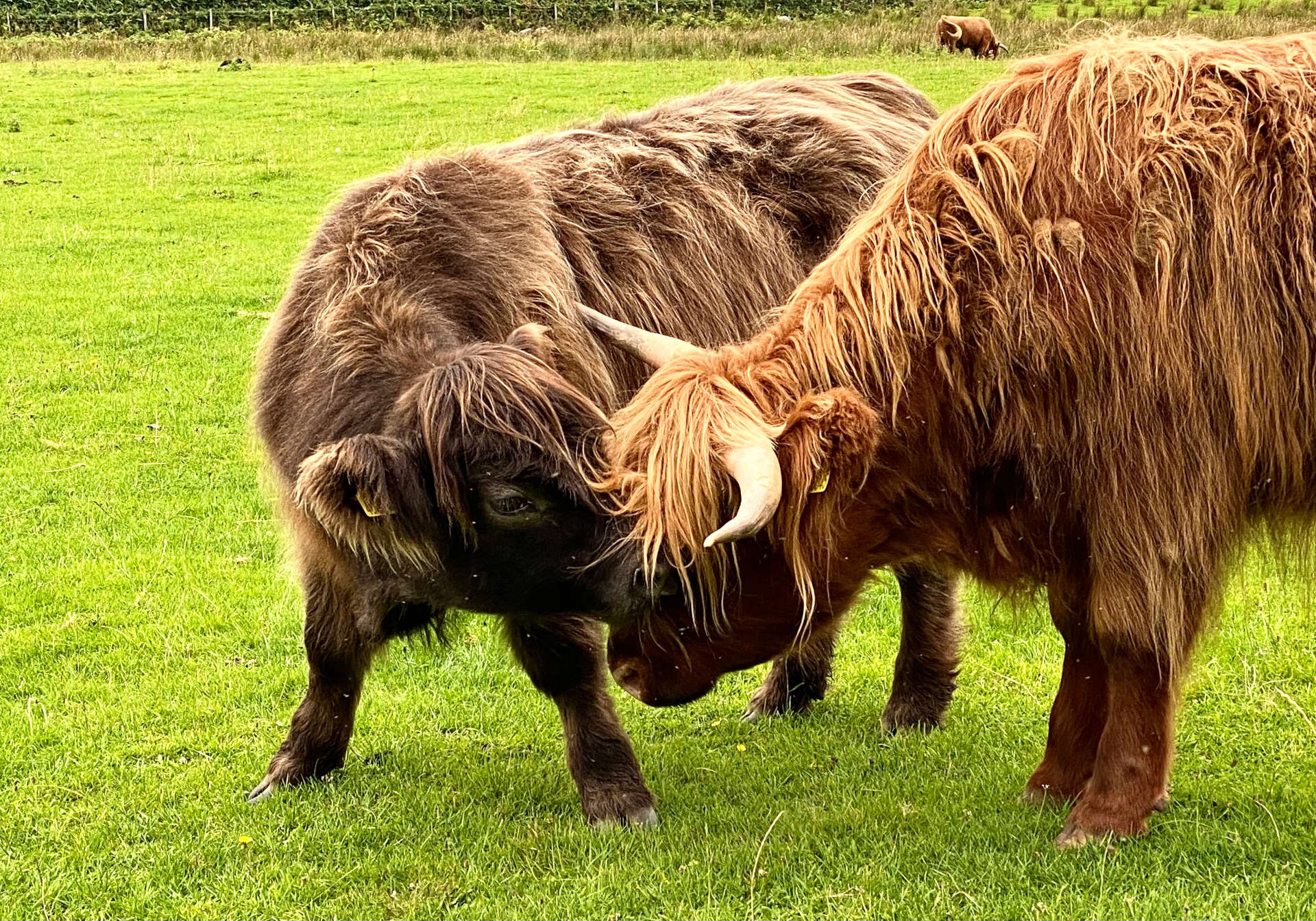
4. Behind the Big Horns
Highland coos are often identified but their very impressive horn-age. These coos have whopping horns on their heads, which are very powerful, so don’t get too close or you might be skewered. Their horns serve a multitude of purposes though. Aside from steering off predators, which thankfully for the coos, isn’t a problem in Scotland, more so in North and South America, the coos horns also help them to rake up the snow and forage for food in the winter. Horns with purpose.
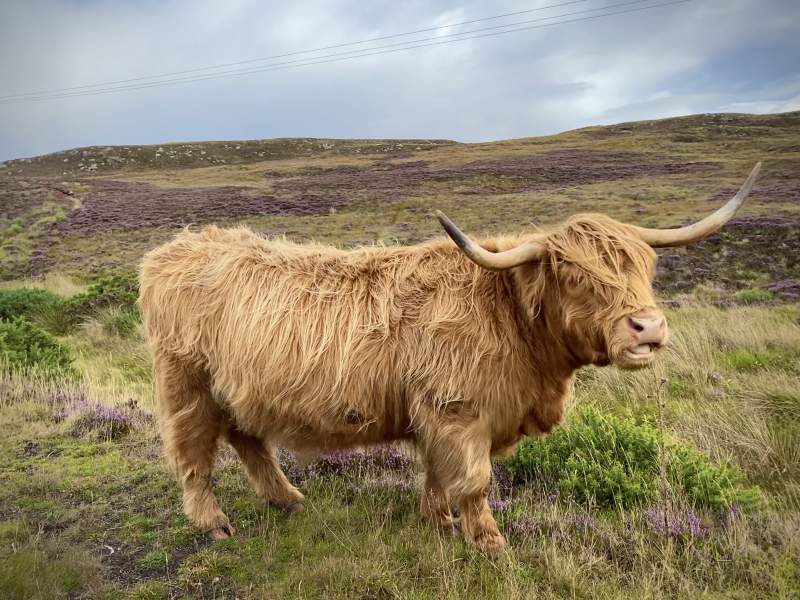
5. Spot the difference
Male horns are thicker than female horns, and they curve foeward with a slight upwards rise near the tip of the horn. Female coos have thinner horns that have a more obvious upwards curve. Yes, the females are more curvy.
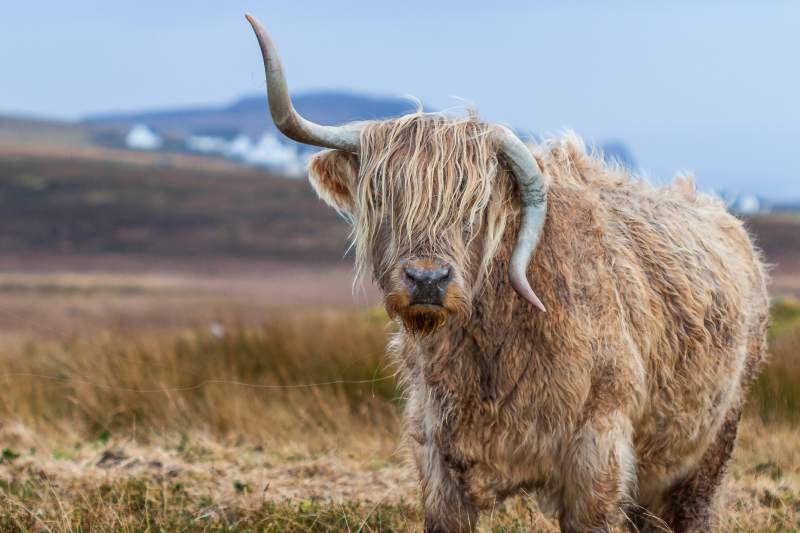
6. Grab Your Coat
Asides from their massive horns, Highland Cows are also known for their long, shaggy coats. These coos have two layers of long shaggy fur, the warm undercoat and the more oily overcoat. This helps to keep them cosy in the winter.
7. Queen Victoria
Apparently, Queen Victoria, when visiting the Highlands is said to have commented that she liked the red coloured coos the best, so to try and please her highness, coos were selectively bred in that colouring. That is part of the reason we see so many ginger coos.
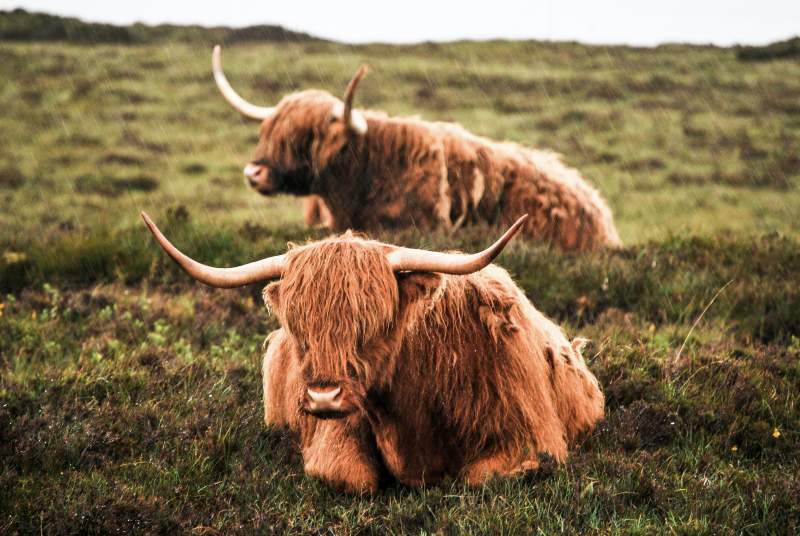
8. Bonnie Baby Coos
When a Heilan Coo gives birth, the calf will be able to stand and walk straight away and instantly recognises its mum. Mummy coo will look after and care for her baby for about 6 months, then it’s on its own. But by that point, it’s usually pretty big.
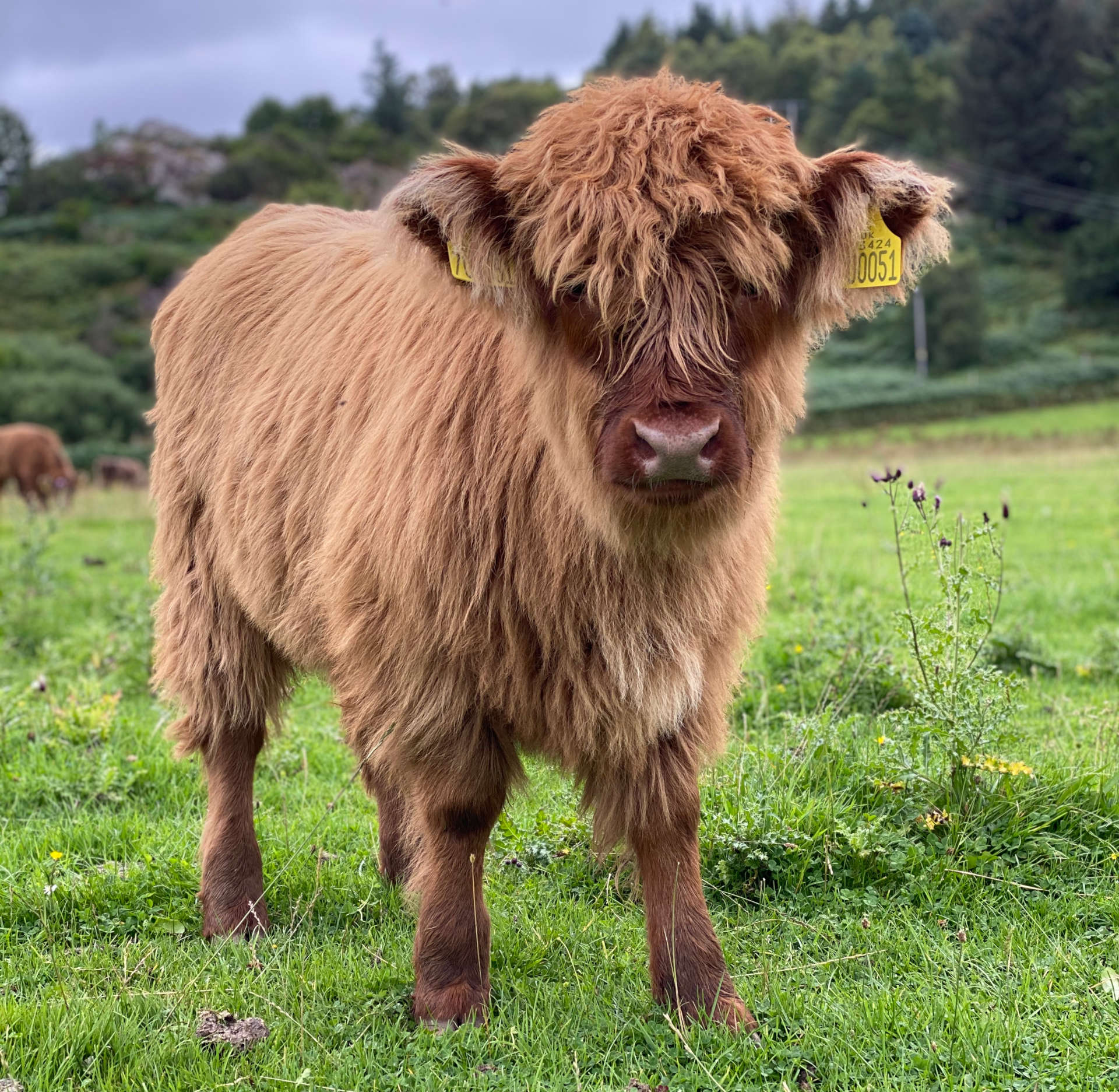
9. A Coat of Many Colours
The most known Highland Cow breed is usually ginger however there are also breeds with yellow, silver, white, red and black coats. The most common breed in the Highlands is the ginger one and they definitely fit well with the backdrop of dramatic Highland scenery.
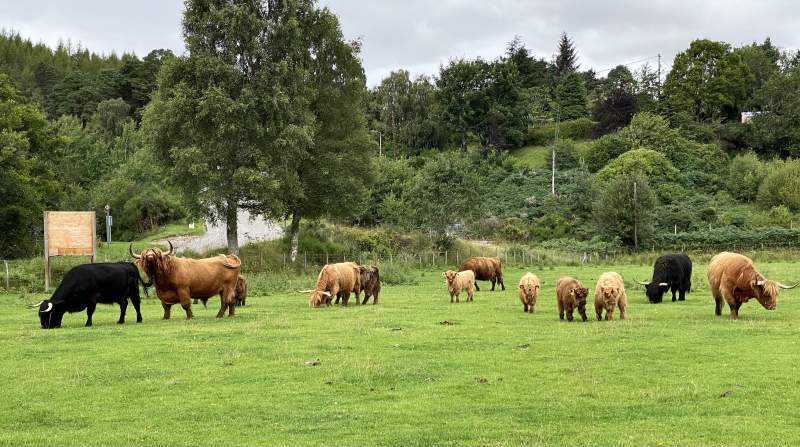
10. Graze Away
Highland Coos eat heaps. In fact, when they’re not sleeping, they’re usually always eating. They spent 8 hours a day munching away and consume almost 70kg of grass a day! That is the equivalent to about 70 pineapples in weight. They need it though, these are big coos.
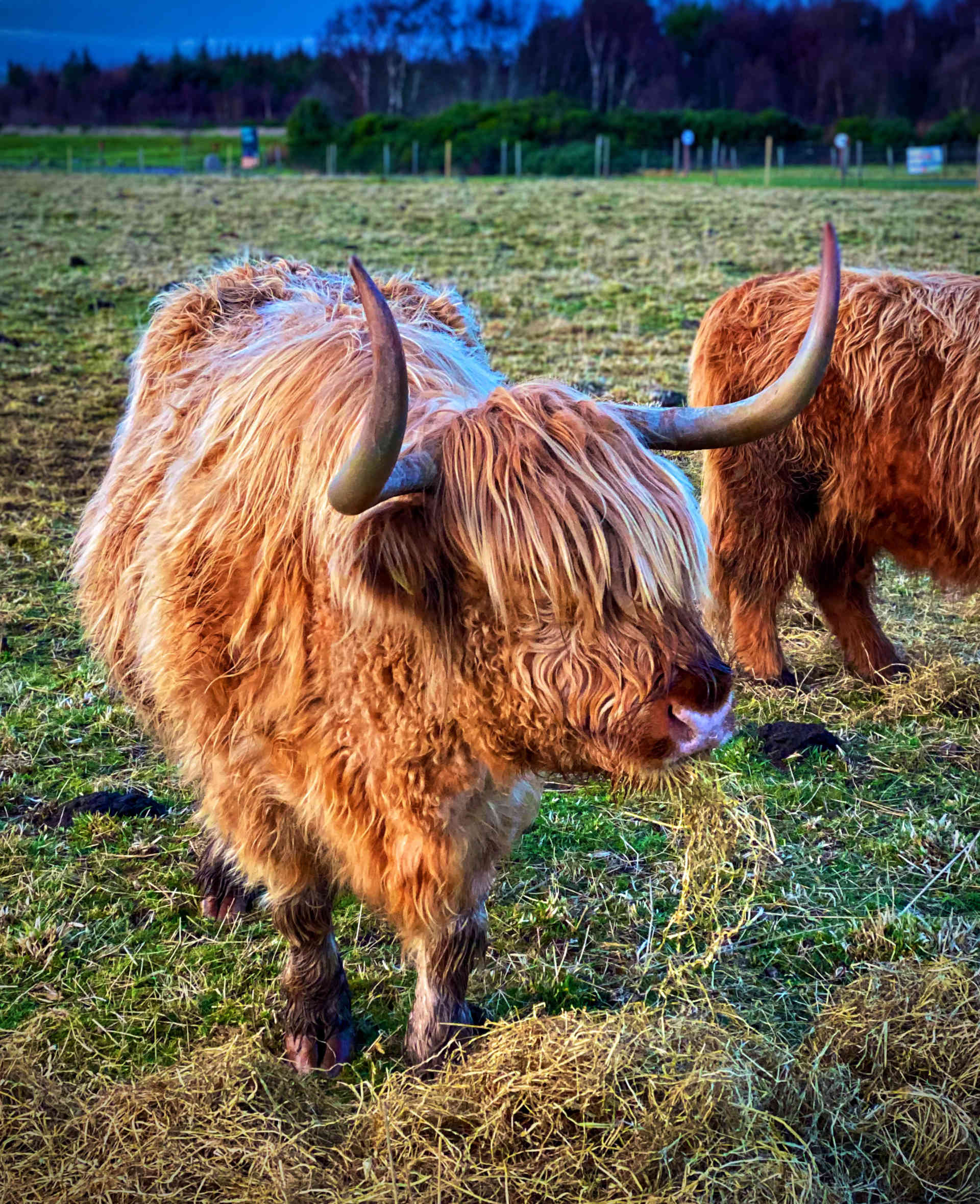
11. Friendly Coo
Highland Coos are one of the friendliest cattle breeds, they’re hardly ever mooooo-dy. Although friendly, they still have massive horns on their heads, so even if you really want a coo-ddle, we wouldn’t recommend it. Highland Cows show affection to each other by mounting, play fighting and licking each other.
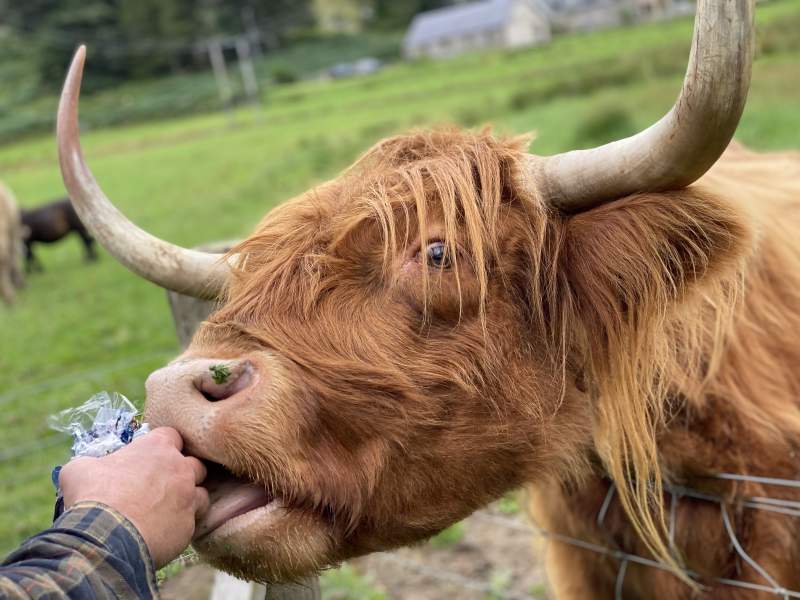
12. Milking It
It is possible to milk a Heilan Coo, but not on a commercial scale. They have smaller teats than other breeds of cattle and the milk has a higher fat content, of about 10%. One Heilan Coo can produce about 2 gallons of milk per day, which would be fine for personal use, but apparently the milk is quite an acquired taste.
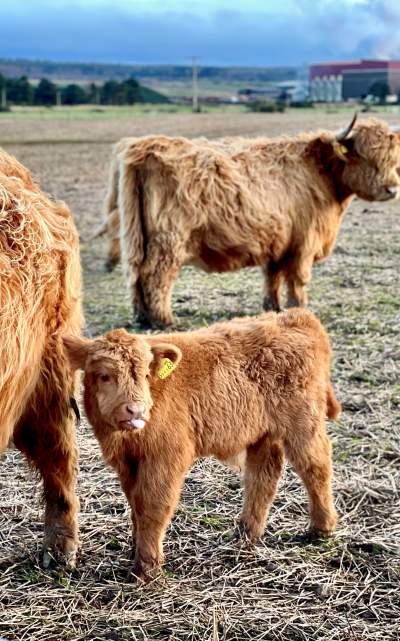
13. Beefing Up
Highland Coo meat is lean, well-marbled, loaded with protein and has a fine texture. It is even lower in fat than chicken! Although Scottish beef farming is nothing intensive, Highland Cow farming is actually more sustainable. The reason that this isn’t adopted is due to the price of the meat which comes at a much higher cost so it isn’t currently, a commercially viable option.
14. Fluffy Floofy Dossan
A coos fringe is known as a “dossan,” which often grows down over their eyes. Some Highland coos are also treated with a deep oily conditioner, which gives them a fluffy appearance and a floofy dossan. A floofy dossan, take that in for a minute.
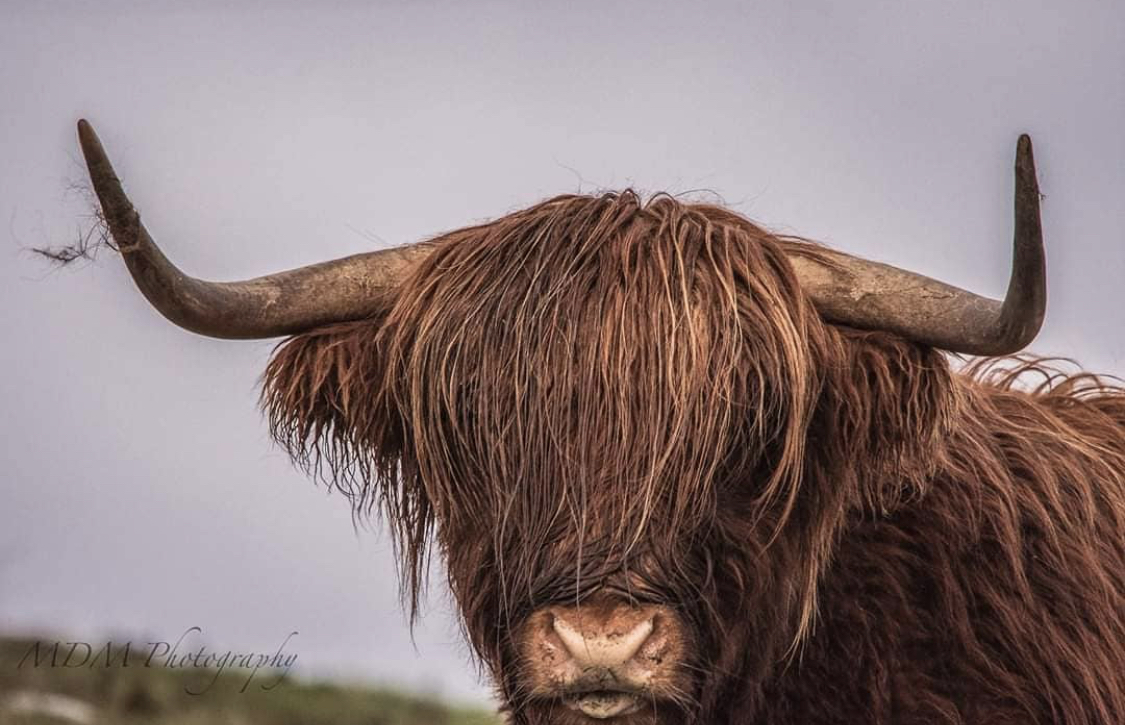
Where to find Highland Cows in Inverness and Loch Ness
We think these Highland Cows know they’re gorgeous, as they are always posing for fun photos. If you’re visiting Inverness and Loch Ness are looking for places to spot coos, check out our "Things to do" map and select "Highland Cow" and you will be given a list of places you can find the for that all important photo opportunity!
Including Cameron's tea rooms, Culloden Battlefield, Easter Dalziel Farm and Loch Ness by Jacobite.
Don’t get too close though, those horns are seriously large.

